Cosmetic Dentistry
Crowns
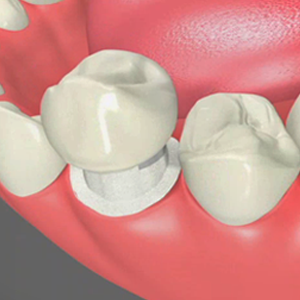
When a tooth is fractured, has a large old filling, or is severely damaged by decay, your dentist may recommend the placement of a full coverage crown or “cap.” Crowns strengthen and protect the remaining tooth structure and can significantly improve the appearance of your smile.
There are several types of crowns which include the full porcelain or ceramic crowns, porcelain fused to metal crowns (also known as PFM's) and all-metal crowns.
Fitting a crown usually requires at least two visits to the dentist's office. Initially, the dentist removes decay and shapes the tooth then an impression is taken and finally a temporary crown is fabricated which holds the tooth's position and protects it until the permanent crown is cemented. During the next visit, the dentist removes the temporary crown, fits and adjusts the final crown and cements the crown into place.
Veneers
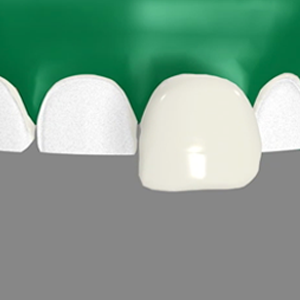
Veneers are artistically designed and custom-made by a highly skilled dental lab which are then cemented to the teeth to create straight, healthy looking, and beautiful teeth. It is usually a two visit procedure. During the first visit, the dentist removes a small amount of the enamel and takes an impression which is sent to our highly qualified technicians who design the custom veneers. It usually takes 7-10 days for the veneers to be fabricated and sent back. During this period the patient wears temporary veneers that are hand made chairside by the dental team.
Cosmetic Bonding
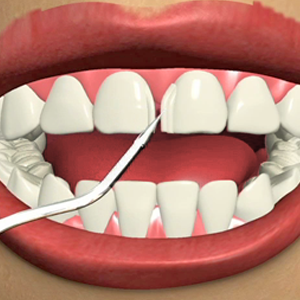
Cosmetic bonding is a simple process of bonding tooth colored resins to the tooth to improve its appearance. This cosmetic dental treatment is suggested to reshape a chipped tooth, decayed tooth, discolored tooth and to fill gaps between teeth. Unlike dental veneers, cosmetic bonding does not require impressions and can be performed in a single visit. The process is minimally invasive. Shade guides are used by the cosmetic dentist to match the color of resin with your tooth's color. Care should be taken not to bite on hard items such as nails or pens. Smoking cigarettes, consumption of dark colored fluids like tea, red wine, coffee and soda can discolor the margins of the resin so these practices should be avoided.
Bridges
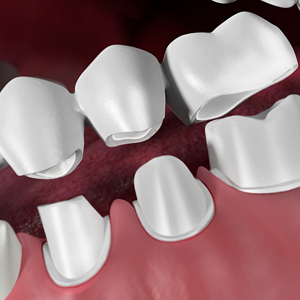
Few incidents have greater impact on dental health and personal appearance than the loss of a tooth. When one or more teeth are missing, the remaining teeth can drift out of position which can lead to severe changes in the bite, the loss of additional teeth, decay and gum disease, etc. When tooth loss occurs, your dentist may recommend the placement of a bridge. A bridge is one or more replacement teeth anchored by one or more crowns on each side to fill the space created by the missing tooth or teeth.
Crown Lengthening
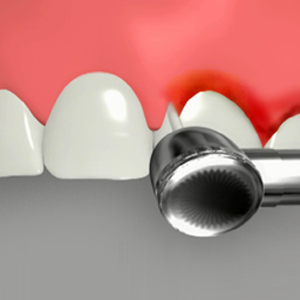
Crown Lengthening is a process of reshaping the soft gum tissues and/or supporting bone structures in order to expose more of the natural tooth/teeth. Crown lengthening can help change a gummy smile, for example. Depending on the complexity of the condition, dentists need to refer the patient to a specialist in order to facilitate optimal treatment of other routine dental restorations such as crowns.
Esthetic Crowns
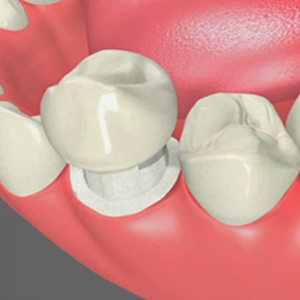
Dental crowns protect the natural tooth and improve the appearance of the smile. Porcelain and other esthetic materials can be shaped to mimic the appearance of a natural crown. The crowns are designed to look as visually ideal as possible. When needed, the crowns will have a translucent characteristic which optimizes esthetics in certain applications. Crowns can be used to protect damaged teeth, severely decayed teeth, discolored teeth, or teeth slightly out of alignment. All the materials used are bio-compatible. Certain crown materials are used for different indications. Your dentist will diagnose and treatment plan which crown is best for you. You may even have multiple types of crowns for the different types of teeth or to try to match the existing teeth, especially if they have existing crowns, as closely as possible. Sometimes a custom shade is needed which may require multiple visits and/or the use of photographs. Try in appointments are often needed in order to evaluate the shade match. Your crown may need to be reshaded or have characteristic shading added several times in order to produce the desired appearance.
Smile Makeovers
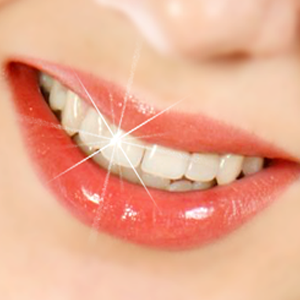
A smile makeover involves a comprehensive approach towards improving esthetics of the smile. The use of veneers, orthodontics, crowns and implants can help improve a smile. Your dentist will perform a thorough examination of the teeth, gums, supporting bone, and the overall health of the patient to arrive at a treatment plan. There are a number of cosmetic procedures that may help achieve the most attractive smile. Smile makeovers are usually a combination of different dental procedures which are aimed at creating the most visually ideal smile possible. Results will vary from patient to patient and each patient may have a vastly different treatment plan. Remember, no two mouths are alike!
Whitening

As we age, our teeth lose the brilliant whiteness that implies good dental health and youth. The unsightly stains associated with tobacco, dark liquids, and other factors can leave us feeling less than confident about our smiles. Fortunately, there is a simple solution to this dental problem: cosmetic tooth whitening. Our practice provides convenient, take-home tooth-whitening products that are clinically shown to improve the visual impact of your teeth. Please see other sections of our website, specifically the FAQ's page, for more information regarding whitening.
Take Home Tooth Whitening
These kits contain a customized tray that is made from custom molds of your teeth and prescription whitening gel. The patient usually wears the trays and gel once per day for approximately two weeks until their teeth have reached the desired shade. The patient may need or desire continued treatment.
FAQs
Is whitening safe?Yes. Extensive research and clinical studies indicate that whitening teeth under the supervision of a dentist is safe. It is not recommended to children under the age of 13 years of age and pregnant or lactating women.
How long do the results last?
To keep your teeth looking their best, we recommend flossing and brushing twice daily along with regular professional cleanings. Occasional touch ups with refill syringes will help keep your teeth their brightest. These can be purchased at the office. It should be noted that tooth whitening treatments have no effect on the artificial materials used for bonds, fillings, veneers, crowned teeth, etc.
Are there any side effects?
Sensitivity during the treatment may occur with some patients. Your dentist may recommend the application of a fluoride gel, fluoride mouthwash, and/or toothpaste designed to relieve sensitivity after the procedure to relieve the symptoms.
Take your first step to feeling good, looking great and making a memorable impression every time you smile. You owe it to yourself! Call our office today to schedule your bleaching consultation! A cleaning is always recommended prior to whitening.
Root Canals
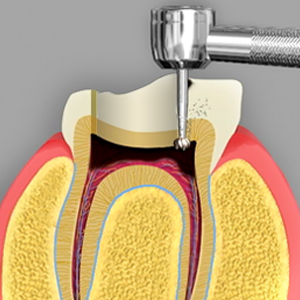
Root canal therapy is a field of dentistry that treats the living tissues within the root canal system found inside the tooth itself. When decay extends to the pulp or the “nerve” inside the tooth, the person almost always experiences discomfort. The pain typically increases at night and may be aggravated with cold, hot, or sweet foods. Root canal therapy relieves this discomfort and saves the tooth itself.
Root canal treatment begins with profound local anesthesia. The tissues inside the tooth are accessed by drilling down into the tooth. Then mechanical removal of the infected tissues is completed which also shapes the canals, preparing them for a nice smooth, clean and sterile fill. The canals are cleaned with very potent chemicals and are then filled with a bio-inert or bio-compatible material known as gutta-percha which is even further sealed by a sealer material.
Following root canal treatment, the tooth becomes more fragile due to physical weakening from the original decay and the fact that the tooth is no longer nourished from the inside out since all the living tissues have been removed by mechanical instrumentation. This drying out of the tooth renders the tooth much more prone to fracture which is why a full coverage crown is almost always indicated. This helps preserve the natural tooth for the longest time possible. Sometimes color changes are also observed in root canal treated teeth that have not had crowns. Sometimes, depending upon the amount of tooth structure that is lost, a post (typically a fiber post) will need to be placed for added retention of the crown. To learn more please call our office today.
Extractions
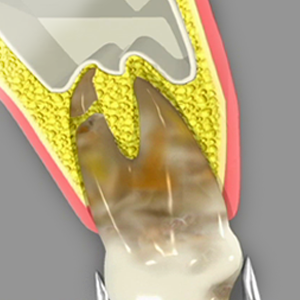
Extractions are performed only when the dentist decides that removing a tooth may improve the oral health of the patient. Tooth decay, crowding and risk of dental infection are some of the common reasons for tooth extraction. Dentists carefully consider and review the medical condition of the patient before performing tooth extractions. It is a process often done with the help of local anesthesia as well as nitrous oxide, oral sedation, and/or IV moderate conscious sedation. Depending on the complexity of the extraction process, surgical removal of the tooth may be necessary. Your dentist or surgeon will provide post-operative care instructions that should be closely followed. These post-op instructions will help reduce the odds of getting a “dry socket.” Pain medications and ice bags can help reduce post operative discomfort and swelling. Some swelling and discomfort is expected because extractions are surgical procedures.
Dentures
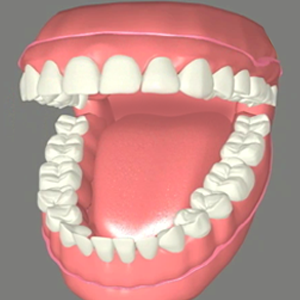
Complete dentures replace the full set of teeth from upper and lower jaws of the dentition. They can aid in chewing and biting functions. Dentures can be directly fixed over the gums, or they can be supported by implants which provides a significant increase in comfort and function. Remember, complete dentures are NOT direct replacements for your teeth. They will only have approximately 30% of the normal chewing function as your natural teeth once did. Complete dentures are one of the oldest methods of replacing lost teeth. There are two types of complete dentures—conventional and immediate dentures. With immediate dentures, the patient will have all the remaining teeth extracted and the new set will be immediately delivered. This prevents the patient from having to go without any teeth whatsoever (i.e. the patient leaves with the new teeth in place that day). The other type of complete dentures is the conventional denture. This process begins with a healing period of 12-16 weeks following the extractions during which time the gum tissues will heal over the sockets and new bone will fill in the holes where the tooth roots once were. Several try in appointments are made where the dentist will to record the jaw relationship as well as the new bite for the patient. After the lab has enough information, the new denture will be processed and then delivered. If the patient has had a previous set of dentures, the waiting period for the healing phase has already occurred and the impression phases may be started immediately. Remember, surveys show approximately 80% of all denture wearers still use a denture adhesive in order to gain better function from their dentures. The best option for improved denture function is to use dental implants!
Partial Dentures

Partial dentures, or RPD's, are removable appliances used to replace one or more missing teeth. This type of denture is an option when there are some healthy teeth left in the dentition. Partials have clasps or other forms of mechanical retainers which are used to keep them firmly attached to the teeth which helps the patient chew more efficiently. They can be supported by the natural teeth or attached to implants. Sometimes dental crowns may be needed to improve the fit of partial dentures to the natural teeth or to create a much more esthetic outcome. Partial dentures are removable and may cause some discomfort or pose an inconvenience to the patient. Over a longer term, partial dentures can still be a sufficient restoration. It is important to take proper care of the appliance and to maintain optimal oral hygiene when living with dentures to avoid unnecessary complications.
Dental Prophylaxis
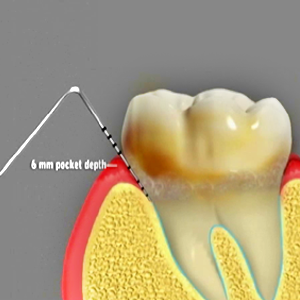
Dental tarter is a layer of deposits formed over teeth which should be removed routinely. Normal teeth brushing and flossing may not be able to remove certain deposits such as calculus. Dental prophylaxis is the medical term used for a professional dental cleaning. This process is one part of your dental care intended to help prevent dental diseases. During the process, plaque and other irritants which can cause harm to oral health are physically removed from the oral cavity. The team will usually take and review X-rays to check for signs of tooth decay and gum infection. Remember, dental cleanings are prescriptions. Some people will be diagnosed and prescribed routine cleanings scheduled every 6 (six) months. Others may need a slightly more involved cleaning called a full mouth debridement and others may need deep cleanings also known as scaling and root planing. Your dental team will evaluate and diagnose which cleaning is best for you.
Request an Appointment
Our Reviews
I had a dental emergency and I was treated quickly and with great care. I am so impressed with the service of everyone. I can not thank you enough!
Leann CherryI’ve known Dr. Renfroe for many years and he is absolutely great! I highly recommend him and you should give him a call to set up your next appointment.
Will Canterbury
